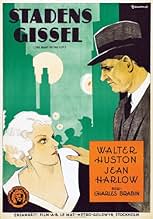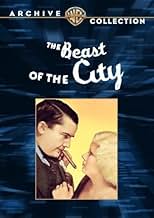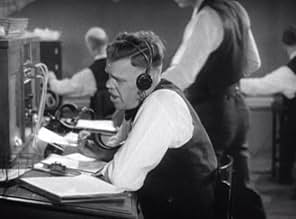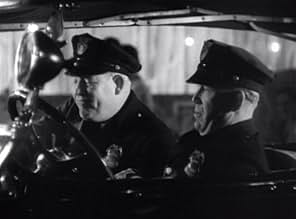Ajouter une intrigue dans votre languePolice Chief Jim Fitzpatrick ruthlessly goes after organized crime and is prepared to use brutal and violent methods to fight it.Police Chief Jim Fitzpatrick ruthlessly goes after organized crime and is prepared to use brutal and violent methods to fight it.Police Chief Jim Fitzpatrick ruthlessly goes after organized crime and is prepared to use brutal and violent methods to fight it.
- Réalisation
- Scénario
- Casting principal
- Detective
- (non crédité)
- Mayor
- (non crédité)
- Turnkey
- (non crédité)
- Police Dispatcher
- (non crédité)
- Policeman #5 on Telephone
- (non crédité)
- Pat - Car 47 Driver
- (non crédité)
- Joel - Policeman Outside Car 47
- (non crédité)
Avis à la une
It's a pretty good crime movie up to the ridiculous climax, where the two sides look like warring armies engaged in a frontier showdown. Why a police chief would deploy his men so recklessly is a real stretch. But, never mind, since there's a metaphorical point at stake here —namely, that police will honorably and bravely defend families no matter the personal cost to them, much as seen in popular Western movies. As a result, what makes for a positive social message is seen in the shootout as not necessarily translating into persuasive cinema.
Harlow makes for a convincing trollop—note her pre-Code liking for pain when properly done! Also, Walter Huston remains one of the fine forgotten actors from this period. Here, he again shows a real ability to convey strong emotion in an understated way. The movie also benefits from LA street locations. It's always a kick to see the styles and fashions from that long ago time. Anyway, taken in its time period, the movie remains very revealing in more ways than one.
As with any piece of popular entertainment that is nearly 70 years old, there are going to be dated elements. What is more important is how relatively modern this film feels, especially compared to the films made under the Production Code after 1934. The story is a hard slice of life, and it will not suit all tastes. This is especially true for those who have been too conditioned by Production Code features and television.
The ending has been compared to Sam Peckinpah's THE WILD BUNCH and Don Siegel's DIRTY HARRY, and not without cause. However, try to imagine yourself as a member of the original theatrical release audience in 1932. There would have been very little to prepare you for it, apart from DOORWAY TO HELL, LITTLE CAESAR, PUBLIC ENEMY, and SCARFACE. The difference here is that the story is told from the point of view of the men in law enforcement. It focuses on something that was common knowledge at the time, that prohibition had corrupted law enforcement far beyond the scope of anything the public had ever known.
The remedy for corruption that this film prescribes is very strong medicine indeed. You may not like it, but I defy you not to think about it for a long time after you've seen it.
The film also borrows a lot from westerns at the time. Huston's unknown western city is ruled by gangster Jean Hersholt who is apparently untouchable as far as the law is concerned. A whole lot like real life gangsters Al Capone and Lucky Luciano who were coming into prominence.
Huston's family life is secure enough, wife Dorothy Peterson, a few kids among them a young Mickey Rooney. He also has his younger and weaker brother Wallace Ford living with them. Ford's got a real good deal, no rent and he apparently chases a lot of skirts. That proves to be his downfall and eventually Huston's.
The skirt that did them in belonged to Jean Harlow. Jean was never a better mantrap in her career than she is The Beast Of The City. Wallace Ford turns out to be putty in her hands.
Also note another good performance in The Beast Of The City is that of Tully Marshall who plays Hersholt's lawyer. The word shyster was invented for lawyers like Marshall, but he's good to have on your side especially if you're guilty as sin.
The climax is an unforgettable one and one more typical to a western than a modern drama. It's what makes The Beast Of The City a classic that is too rarely seen today.
Le saviez-vous
- AnecdotesMickey Rooney had just turned 11 years old when he played Walter Huston's young son in his first full-length sound feature film. His character's name is also "Mickey," and his first line is, "Say, those don't look like pancakes!"
- GaffesWhen Ed and Daisy first kiss, in a medium shot, he's holding her head in the crook of his left arm, and her right had is on his side. In the next closer shot, his arm is down and her right hand is up on his lapel.
- Citations
Daisy Stevens, aka Mildred Beaumont: [Ed grabs her arm tightly] Say! That hurts a little bit.
Det. Ed Fitzpatrick: And you don't like to be hurt, do you?
Daisy Stevens, aka Mildred Beaumont: Oh, I don't know.
[Suggestively]
Daisy Stevens, aka Mildred Beaumont: Kinda fun sometimes if it's done in the right spirit.
Det. Ed Fitzpatrick: [Pushes her away] Get the beer!
- Crédits fousOpening card: Instead of the glorification of cowardly gangsters, we need the glorification of policemen who do their duty and give their lives in public protection. If the police had the vigilant universal backing of the public opinion in their communities, if they had the implacable support of the prosecuting authorities and the courts, I am convinced that our police would stamp out the excessive crime, which had disgraced some of our great cities. ---- President Herbert Hoover
- ConnexionsFeatured in Harlow: The Blonde Bombshell (1993)
- Bandes originalesChopsticks
(1877) (uncredited)
Traditional piano tune
Music by Euphemia Allen
Played on piano by Betty Mae Crane and Beverly Crane
Meilleurs choix
- How long is The Beast of the City?Alimenté par Alexa
Détails
- Date de sortie
- Pays d’origine
- Langue
- Aussi connu sous le nom de
- The Beast of the City
- Lieux de tournage
- 3849 Main Street, Culver City, Californie, États-Unis(robbery at the Bank of America branch)
- Sociétés de production
- Voir plus de crédits d'entreprise sur IMDbPro
Box-office
- Budget
- 230 000 $US (estimé)
- Durée1 heure 26 minutes
- Couleur
- Rapport de forme
- 1.37 : 1
Contribuer à cette page





































